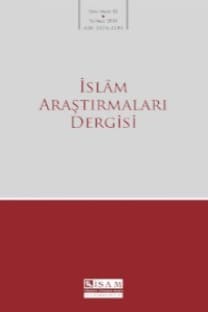Ta‘zîr’in Ölçü ve Kaideleri
Bu makale, ta‘zîr cezalarının takdirine yön verecek birtakım ölçü ve kaidelerin bulunduğunu, dolayısıyla hâkime sınırsız ve keyfî bir yetki tanınmadığını ortaya koymayı hedeflemektedir. Ta‘zîr cezaları hedefleri, türleri, miktarı/süresi, uygulama şartları, uygulayıcısı, ispat yolları, cezanın düşmesi gibi çeşitli açılardan kaidelere bağlanmış olup hâkimin takdir yetkisi daha çok hedefleri gerçekleştirecek şekilde uygun ceza türünü ve miktarını/ süresini seçme gibi hususlarda ortaya çıkmaktadır. Tarih boyunca hemen her mezhep içinde ta‘zîr cezalarını maslahat düşüncesiyle temellendirerek hâkime geniş bir takdir yetkisi tanıyan fakihler olduğu gibi, başta idam ve para cezaları olmak üzere bir kısım ta‘zîr türlerinin meşruluğunu kabul etmeyenler de bulunmuştur.
Anahtar Kelimeler:
Tazîr, ceza, suç, siyaset-i şer’iyye, malî ceza, ölüm cezası, maslahat, takdir yetkisi
The Criteria of Ta‘zýr
The Criteria of Ta‘zýr This paper aims to display that the ta‘zýr punishment in Islamic law is not subject to a limitless and arbitrary discretion; on the contrary, the use of the discretional power is limited with certain principles. There are firmly established rules for ta‘zýr punishments in terms of their aims, types, quantity/duration, conditions of execution, executors, evidence, and so on. So, the discretional power left to the qadýs or legal authorities mostly pertains to the choice of the proper type of punishment and proper quantity/duration that best serve the aim. However, throughout the Islamic history there have been faqýhs in every madhhab that, considering the principle of maslahah, i.e., public good, gave qadýs a broad discretional power and those that rejected the validity of certain types of ta‘zýr punishments such as death penalty and fines
Keywords:
Ta’zýr, punishment, crime, al-siyasa al-shar’iyya, fine, death penalty, maslaha, discretional power,
- ISSN: 1301-3289
- Yayın Aralığı: Yılda 2 Sayı
- Başlangıç: 1997
- Yayıncı: TDV İslâm Araştırmaları Merkezi
